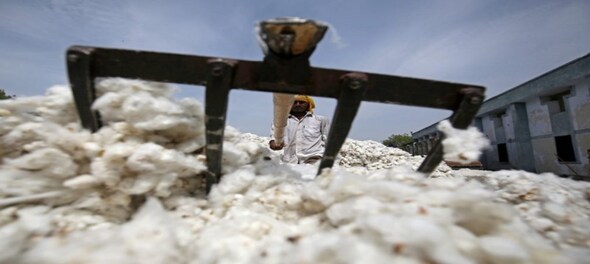
There is no respite for the textile industry. Even though cotton's price has cooled off in the global market, it continues to trade at a premium in India. The speculative pricing in the Indian market and other factors dealt a big blow to the export market too.
According to July 2022 data on trade, the value of exports of cotton yarn/fabs/madeups, handloom products and others was down 28 percent — their value was down to $943.50 million as compared to $1315.42 million in July 2021.
Ripple Patel, vice-president of the Gujarat Spinners' Association said, “Premium pricing for non-premium-quality cotton, dollar appreciation-euro depreciation and recession-like situation have led to fall in exports.”
Expanding on this, Cotton Association of India (CAI) president Atul Ganatra said, “Exports of yarn were down around 70 percent year-on-year in July 2022,"
In the global market, cotton prices are down. In ICE Futures, it is down from 155 cent (1,05, 000) to 95 cent (58,000). Atul Ganatra added, "Indian markets are high purely due to speculation." At this high — the current MCX rate of Rs 1,02,000 per candy — there is no demand for cotton, he added. Meanwhile, the Forward November month for 29 mm cotton is available in the Rs 65,000 spot.
Ganatra added, "Indian mills have to buy cotton on MCX rate of Rs 1,02,000 and sell yarn in exports at the ICE Futures rate of Rs 60,000 per candy."
As yarn rates are linked with ICE in the international market, there is a huge price gap of Rs 40,000 per candy. "Thus, there is no order of exports with India for cotton — cotton yarn and garment."
The industry fears that the speculation in Indian cotton through the exchanges is "very dangerous for the entire Indian textile industry".
At present, mills are not buying cotton due to the high prices. Most are trying to sell their existing inventories to meet their obligations without really adding to their stock. Patel added that this may have major implications over time. While spinning mills in western India are operating at a 40 percent capacity, some southern mills are operating in the range of 50-60 percent. The annual consumption of cotton has declined from 27 lakh bales per month to 19 lakh bales. Last month, it was around 15 lakh bales.
Meanwhile, imports of cotton are increasing at 10,000 bales every day, Ganatra had told CNBC-TV18’s Manisha Gupta. Due to premium cotton prices in the Indian market, the textile industry is resorting to exports to meet some obligations where margins are a concern.
In Punjab and Haryana, there are concerns about whitefly attacks damaging the crop. But that is not a concern at present for the next cotton arrival season, mainly because in Gujarat and Maharashtra — major cotton growing states — the health of the crop is good. Atul Ganatra said, “As of today, Indian crop conditions are excellent. Cotton sowing crossed 120 lakh hectares so far. It is 5-6 percent higher this year compared to last year at the same time.”
He added cotton sowing is expected in 125-127 lakh hectares.
The industry feels this premium pricing will continue till the first week of October — just in time for new arrivals.



